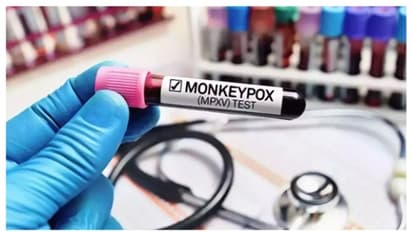EXPLAINER: What is Monkeypox? What are the signs and symptoms of Mpox?

Synopsis
A suspected case of Mpox has been identified in India in a young male patient recently returned from a country with active transmission. While the risk of widespread infection is considered low, public awareness and education about symptoms, transmission, and prevention are crucial.
The Union health ministry said on Sunday it has identified a suspected case of the Mpox (earlier called Monkeypox) virus. A young male patient, who has recently returned from a country, which has active Mpox transmission, has been put in isolation at a hospital and is said to be in a stable condition, the ministry said. The authorities stated that tests are being conducted on his samples to verify the existence of a virus. Concern concerning the return of Mpox was already present, particularly following the World Health Organization's (WHO) August highest-level alert.
What is Monkeypox?
The WHO states that the virus that causes mpox is the monkeypox virus, which is a species of the orthopoxvirus genus. The virus is primarily transmitted via intimate contact, but it can also infrequently enter a person's body through objects or surfaces that an infected person has touched. The virus is classified into two separate types: clade I, which includes subclades Ia and Ib, and clade II, which includes subclades IIa and IIb. The clade IIb strain was the cause of a global Mpox outbreak in 2022–2023, according to the WHO website.
Animal bites or scrapes can spread the mumps to people, as can engaging in certain activities including hunting, skinning, trapping, cooking, playing with carcasses, or eating animals.
The likelihood of Mpox spreading in India is thought to be minimal, but community participation and education about the disease are still needed. This education should address indications and symptoms, mechanisms of transmission, risk factors, and how to get healthcare. It's also critical to educate medical professionals, including physicians, about possible travel-related instances of Mpox.
What are the symptoms?
The virus produces flu-like symptoms, such as fever, headache, rashes, pus-filled sores, and so on. These are often moderate symptoms, but they can occasionally be fatal as well. The WHO reports that Mpox can have a variety of symptoms.
According to WHO recommendations, some people may have less severe symptoms, while others may develop more serious diseases and require care in a facility. One of the most common symptoms is a rash that might linger for two to four weeks.
“This may start with, or be followed by, fever, headache, muscle aches, back pain, low energy and swollen glands (lymph nodes),” WHO explains. The rash looks like blisters or sores and can affect the face, palms of the hands, soles of the feet, groin, genital and, or anal regions. These lesions may also be found in the mouth, throat, anus, rectum or vagina, or on the eyes.
When secondary bacterial infections of the skin or blood, lung infections, and bigger, more widespread sores, particularly in the mouth, eyes, and genitalia, begin to occur, this illness becomes more serious. Complications include serious bacterial infection from skin lesions, brain swelling (encephalitis), heart troubles (myocarditis), lung infections (pneumonia), and vision issues will result from this. At this point, hospitalisation and antiviral medication are necessary for patients with severe Mumps in order to lessen the severity of their lesions and accelerate their recovery.
Stay updated with the Breaking News Today and Latest News from across India and around the world. Get real-time updates, in-depth analysis, and comprehensive coverage of India News, World News, Indian Defence News, Kerala News, and Karnataka News. From politics to current affairs, follow every major story as it unfolds. Get real-time updates from IMD on major cities weather forecasts, including Rain alerts, Cyclone warnings, and temperature trends. Download the Asianet News Official App from the Android Play Store and iPhone App Store for accurate and timely news updates anytime, anywhere.